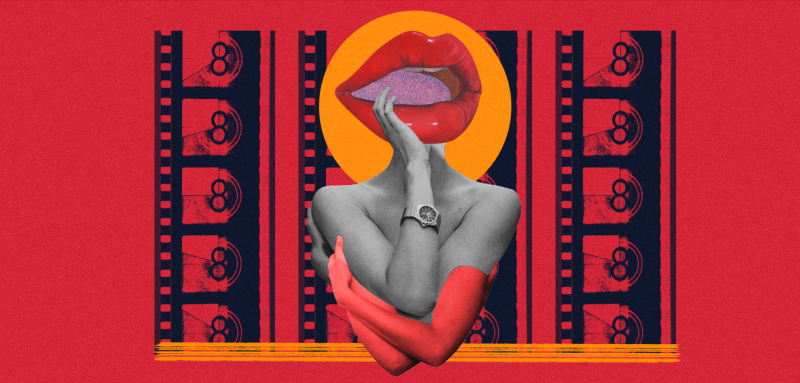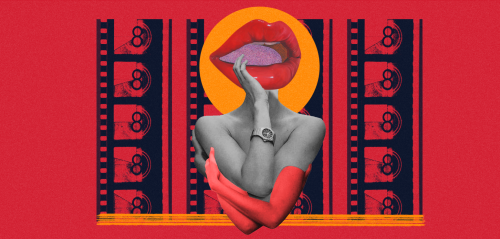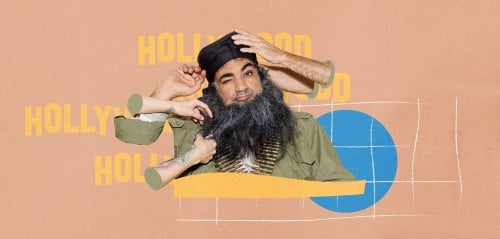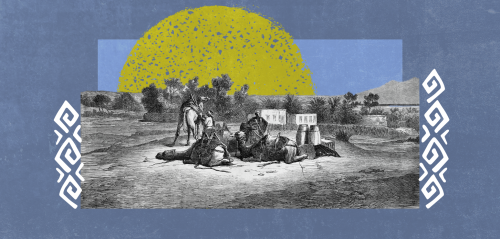If Orientalism, as Edward Said explained, is the intellectual force that enabled Europeans to impose "a constructed and distorted" representation and cultural identity on Arab peoples, then the pornography industry today is imposing similar such representations and constraints. The freedom to produce pornographic material is not available in the Arab world and likely won't be anytime soon, Arabs are unable to participate in shaping and controlling their image, leaving others to portray them and their identity in this space.
According to statistics on the consumption of online pornographic content, Arab countries display some of the highest viewing and engagement rates. According to Google AdWord, 10% of internet searches, or 55.4 million, for the word "sex" come from the Arab world.
If Orientalism, as Edward Said explained, is the intellectual force that enabled Europeans to impose "a constructed and distorted" representation and cultural identity on Arab peoples, then the pornography industry today is imposing similar such representations and constraints.
Arab sexuality in fantastical poetics
The earliest examples of foreign artistic pornographic depicting Arab sexuality can be traced back to the 1969 Japanese adult animated film A Thousand and One Nights, by Eiichi Yamamoto.
The film tells the story of Aladdin, a 'waterboy' wandering the streets of Baghdad selling water. In the opening scene, he enters the market and stands among men watching women being sold in the slave market. The merchant reveals each woman by removing her face niqab, at which time the crowd begins to bid. When the merchant unveils the face of Mariam, the men are stunned by her beauty, the shape of her breasts and torso. She is sold for a high price. However, Aladdin, who fell in love with her, abducts her, running away with her.
The sex scene between Aladdin and Mariam takes place in an empty palace on a lavish bed. It begins with a kiss, and the sexual act is depicted in a magical and poetic way. Their bodies float in the cinematic space, Mariam's skin becomes red and rosy pink. The bodies are warm and vibrantly hued, and Mariam's body transforms into a flower with a long urethra or vulva. At the end of the scene, both bodies float over the city on a magic carpet, symbolic of the pleasure experienced.
The freedom to produce pornographic material is not available in the Arab world and likely won't be anytime soon, Arabs are unable to participate in shaping and controlling their image, leaving others to portray them and their identity in this space.
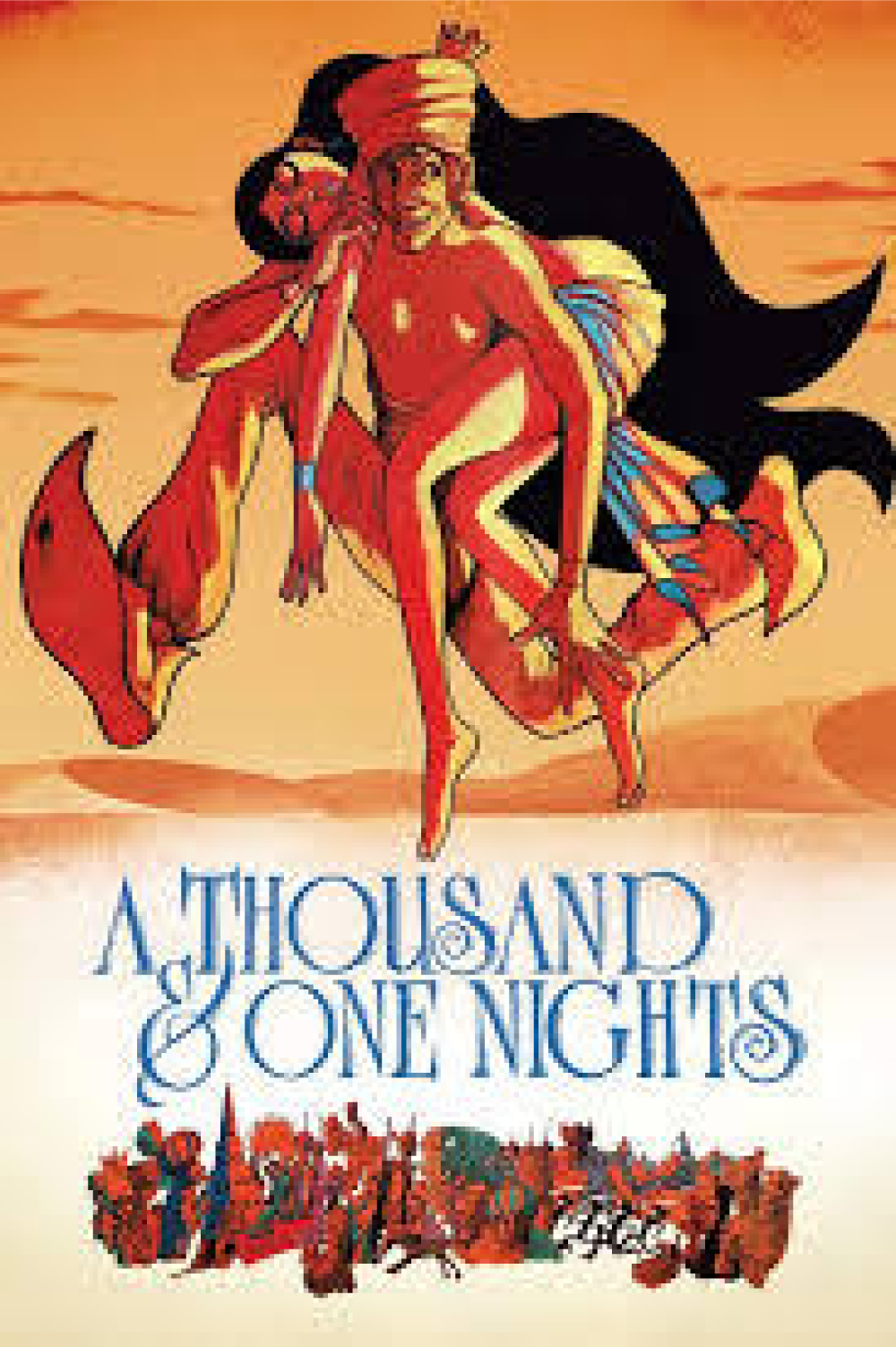 A Thousand and One Nights animated film poster (by Eiichi Yamamoto)
A Thousand and One Nights animated film poster (by Eiichi Yamamoto)
Aladdin's adventures lead him to "the island of nude women", where undressed women fawn over Aladdin, showering him with kisses, each woman trying to seduce him. What follows are scenes of bathing, nudity, and sexual pursuit that only end with the arrival of the nude queen of the island. Aladdin and the queen engage in sexual intercourse, which is also depicted in a magical, fantastical way.
While genitals do not appear in this film, bodies are shown intertwining and transitioning color. At the end of this film, the queen becomes jealous of any woman near Aladdin, which leads him to hide and watch her as she transforms into a snake, attempting to attack and swallow him. This prompts Aladdin to flee the island, and he discovers that all around him, the women on the island have transformed into snakes.
Sexuality, knowledge, and imagination
The British pornographic film A Thousand and One Erotic Nights (1982), directed by Edwin Durell, opens with the symphonic poem, Scheherazade, by Nikolai Rimsky-Korsakov.
The film begins with the story of Sultan Shahryar, leading a war far from his palace while his wife, the queen, is shown engaging in sexual intercourse with a palace aide, before having a threesome with another man. After Shahryar returns from war to the palace, stereotypical Oriental sexual devices are presented on screen; a belly dancer and a black-skinned acrobat. The film also includes multiple pornographic lesbian scenes.
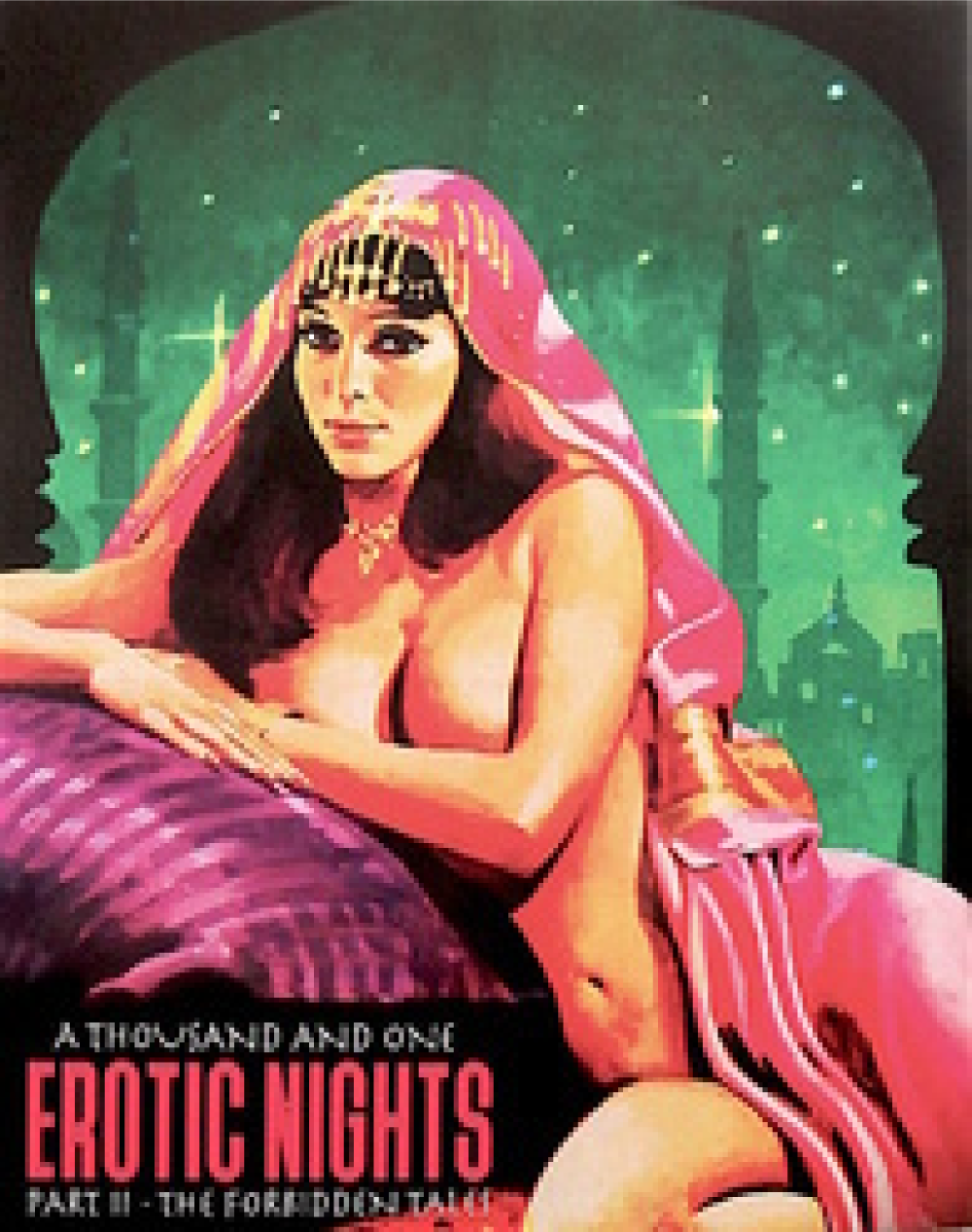 Poster for the film "A Thousand and One Erotic Nights" (1982)
Poster for the film "A Thousand and One Erotic Nights" (1982)
The selected stories narrated by Scheherazade in this film serve the pornographic theme. The first story is about a hunter who spies on an upper class woman daily. After encountering a genie from a magic lamp, he is granted two wishes. The hunter requests to meet the woman he spies as she exits her daily bath and cloaks herself in perfume, a stereotyped aesthetic of the Orient.
After he enters her chamber and they engage in intercourse, audiences are introduced to her two sisters, both eighteen. Eventually, they engage in a threesome. The following day, the same unfolds, and despite falling asleep at the sisters’ house, the hunter magically wakes up in the morning on the seashore.
Perhaps the film Arabika (1994), by the Italian director Mario Salieri, presents the worst image of Arabs and their sexuality, as it stereotypes the sexuality of kings and heritage on the one hand, and attacks the image of contemporary political activists on the other.
The second story narrated by Scheherazade is about a young traveler who wanders into the far East, where he enters the bedchamber of a Chinese woman, sexually assaulting her while she sleeps, until her samurai fighter husband comes in and attacks him. The traveler flees, and repeats this in a European country, where he similarly engages in intercourse with a lone woman in bed, before the woman's husband enters, pointing a gun at him. The traveler narrowly escapes death. Just as in Scheherazade's story, where one tale equals her life, in the traveler's story, intercourse equals either death or life.
In the film, Scheherazade is portrayed as an enlightened woman, with a talent for storytelling stemming from her many travels. The narrator shares that she learned mathematics, sciences, and the art of love, explaining, "Her imagination was rich, and her innovations were abundant."
Scheherazade tells the Sultan of pornographic scenes, involving three women, while simultaneously, a similar sexual event unfolds before him in the palace hall; a distinctive scene where the Sultan and Scheherazade watch a sexual scene involving three women. Throughout the film, Scheherazade's body remains separate from the sexual acts taking place around her in the palace, until Shahryar confesses his love for her, initiating a solitary sexual scene between them that concludes the film.
The second part, A Thousand and One Erotic Nights Part II: The Forbidden Tales, was released eight years after the first part, and features largely different cinematic and narrative language, with a higher dose of comedy. Shahryar lives in a state of sexual boredom, confessing to his aide, the sorcerer, that he is no longer able to climax. The royal palace announces the sultan's need for a companion, and a competition is announced to select a suitable mistress. Thus, the search for a companion becomes a gateway to a number of pornographic scenes that take place before the eyes of the minister overseeing the selection process, of the best titillating mistresses for King Shahryar, who continues to languish under the curse of sexual boredom despite the group sex practices taking place around him, and despite in sadism and masochism — until he meets Scheherazade.
The narrator says, "That is because Scheherazade was exceptional. She possessed a special talent, the talent of imagination." Before the close of the film, Scheherazade tells Shahryar of the pleasure of having intercourse in front of a mirror, before teaching him how to.
In the film Arabika, the prince of the Kingdom of Bahrain kidnaps an Italian woman, stealing her away from her husband and back to his kingdom. The prince subjects her to a system where she must learn the art of belly dancing, and various sexual practices from the palace concubines.
The lust of the ruling class and repression of the ruled classes
Perhaps the film Arabika (1994), by the Italian director Mario Salieri, presents the worst image of Arabs and their sexuality, as it stereotypes the sexuality of kings and heritage on the one hand, and attacks the image of contemporary political activists on the other.
In the film's story, Francesca, a wife seeking sexual adventure, meets a man with whom she has intercourse under the moonlight at a party, but the next day she discovers that he is the prince of the Kingdom of Bahrain. The prince asks her to leave with him, before kidnapping her back to his kingdom, stealing her away from her husband.
The prince has intercourse with Francesca in a pool, before subjecting her to a system where she must learn the art of belly dancing, and various sexual practices from the palace concubines. Francesca's sister, Roberta, follows her to Bahrain; she is shown wandering the street market, which the film focuses on as a distinctive part of Arab culture.
The courtiers, or the king's men, also in the market, are shown wearing military attire and keffiyehs, their clothing suggestive of a new military system, or secret service. They receive a call informing them that there is a blonde woman in the market, whom they kidnap and place in prison, where some of the film's most sensitive scenes take place. On the walls of the prison, we see a handwritten "Arafat", referring to the late Palestinian President Yasser Arafat. At night, intelligence agents sneak into the prison to rape the women before the other prisoners, who watch on from behind the prison bars
The courtiers, or the king's men, also in the market, are shown wearing military attire and keffiyehs, their clothing suggestive of a new military system, or secret service. They receive a call informing them that there is a blonde woman in the market, they are to follow the King’s orders and bring her to the palace. Roberta is then also kidnapped and placed in prison, where some of the film's most sensitive scenes take place. On the walls of the prison, we see a handwritten "Arafat", referring to the late Palestinian President Yasser Arafat. At night, intelligence agents sneak into the prison, raping Roberta and her friend before the other prisoners, who watch on and masturbate behind the prison bars.
In another key scene, Roberta and the Bahraini prince are shown engaged in dialogue. The prince says, "I can execute you on charges of treason." Roberta responds, "I will inform the world of the barbarism of your regime, and I will complain to my country's ambassador."
To which the prince responds, "I am the king in this kingdom, I am the law, and nothing opposes my desire, so leave immediately before I imprison you."
Roberta leaves, repeating, "The world will know what is going on here."
Before Francesca and her sister Roberta leave the country on the travel bus, they are detained again by customs officers and subjected to another act of sexual violence.
In one scene, the female protagonist tells the Bahraini prince, "I will inform the world of the barbarism of your regime," to which the prince responds, "I am the king in this kingdom, I am the law, and nothing opposes my desire, so leave immediately before I imprison you." The protagonist leaves, repeating, "The world will know what is going on here."
Blending pornographic promotion with political rights and freedoms issues
Women of the Middle East (2015) is a film produced by the American pornographic production company PornFidelity. The film features four pornographic scenes, ranging in length from 30 to 60 minutes.
The first story is a domestic tale, with the wife wearing a black niqab, even in the privacy of her kitchen as she prepares food while adorned with jewelry and anklets. Her husband returns home wearing a white jalabiya and keffiyeh. While he is eating, we see the wife leave the house and get into the car, before her husband follows her and leads her back to their house. The film then shows the man punishing the woman for leaving unaccompanied, using sex as a tool for punishment. He spanks her and they engage in aggressive intercourse.
The second story unfolds in an arid, desert-like scene, where the woman appears dominant, naked except for the niqab and underwear. She leads the man, Ryan, bound by a chain and wearing a jalabiya and slippers, down a hill to a tent, and forces him to have intercourse while he is bound with iron chains.
In the film Women of the Middle East (2015), the wife appears wearing a black niqab covering her entire face and body, even in the privacy of her kitchen. Her husband returns home wearing a white jalabiya and keffiyeh. The film then shows the man punishing the woman for leaving the house unaccompanied, using sex as a tool for punishment
The third story unfolds in a luxury hotel, where the customer, Ryan, sits in a room wearing a suit, smoking and drinking whiskey while holding dollar bills and a dagger. He awaits the arrival of a woman wearing an Afghan burqa. After over 15 minutes of physical and sexual interaction between the pair, the woman is still fully veiled, with a few tears and holes in her clothes, where the dagger was used to tear the robe in order to complete the intercourse.
The fourth story draws elements from literary heritage, where the woman is a belly dancer and the man is dressed as Ali Baba, suggesting a balanced interaction between the dancer and the man.
 A scene from the adult film "Women of the Middle East" (2015)
A scene from the adult film "Women of the Middle East" (2015)
Although the producer, a woman, stated, "I did not want to portray them as mere veiled women, and I tried to put a little of my feminism in this video," researcher E. Dixon wrote in MIG magazine: "The videos recreate many stereotypical images of Middle Eastern women: the oppressed wife, the seductive dancer, the prostitute being trafficked, and so on. However, as is evident from the opening scene of the trailer, the film hopes to undermine these stereotypes by portraying Muslim women as sexy, seductive and attractive."
In 2018, the production company BangBros launched a video series titled "Tour of Booty," which consists of videos shot on cameras mounted on the rifles of American soldiers on tour in the Middle East and Afghanistan. With names like "Operation Booty Roundup! (Classified)" and "US Soldiers Pick Up Fresh Arab Meat For Their Party", soldiers carry out their military duties while filming their sexual activities with local women, who are either prostitutes or girls they obtained as "booty", or spoils of war.
In 2018, production company BangBros launched a video series titled "Tour of Booty," which consists of videos shot on cameras mounted on the rifles of American soldiers on tour in the Middle East and Afghanistan. With names like "Operation Booty Roundup! (Classified)" and "US Soldiers Pick Up Fresh Arab Meat For Their Party", soldiers carry out their military duties while filming their sexual activities with local women they obtained as "booty", or spoils of war
On the site, the producers proudly declare, "Welcome to Tour of Booty! Our controversial new site features videos showing horny US soldiers with cameras making the craziest and most banned Arab porn you will ever see."
Perhaps the most prominent pornographic film involving Arab characters was released in 2014, a series titled "Hijab Hookup," depicting scenes of women clad in traditional Islamic head coverings or burqas covering their entire bodies engaging in a wide range of sexual activities. The series sparked massive backlash across the Muslim world when it was released in November 2014.
However, it also led to a significant increase in the popularity of pornographic material dealing with Islamic themes and topics. According to Google Trends, searches for "hijab porn" are on the rise. The hijab and niqab are symbols of modesty, and pornography is completely prohibited in Islam, perhaps leaving viewers to enjoy the forbidden thrill.
Perhaps the most prominent pornographic film involving Arab characters was a series titled "Hijab Hookup," depicting scenes of women clad in traditional Islamic head coverings or burqas covering their entire bodies engaging in a wide range of sexual activities. The series' release in November 2014 sparked massive backlash across the Muslim world
On their site, the production company TeamSkeet shared, "When growing up in a conservative and traditional culture, you must suppress your deepest desires. The middle-eastern babes of Hijab Hookup know way too well how hard it is to keep their sexual urges silent, and they are finally ready to let their inhibitions run free! With the help of the right man, these hijabi ladies can’t wait to experience what the rigid cultural rules have withheld from them."
Raseef22 is a not for profit entity. Our focus is on quality journalism. Every contribution to the NasRaseef membership goes directly towards journalism production. We stand independent, not accepting corporate sponsorships, sponsored content or political funding.
Support our mission to keep Raseef22 available to all readers by clicking here!
Interested in writing with us? Check our pitch process here!
